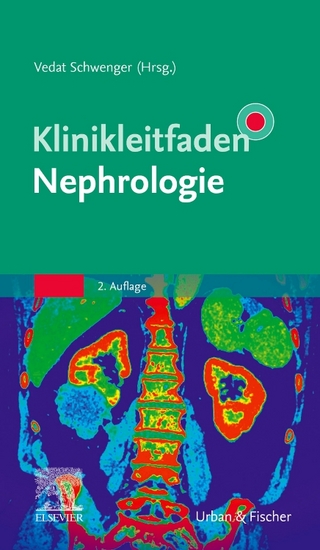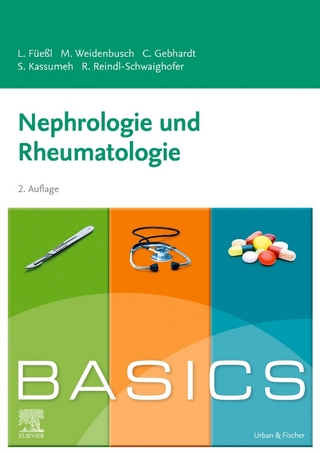
The Renal Papilla and Hypertension
Kluwer Academic/Plenum Publishers (Verlag)
978-0-306-40506-8 (ISBN)
- Titel ist leider vergriffen;
keine Neuauflage - Artikel merken
Pitcock and Muirhead were able to culture these interstitial cells, and implants of the cultured cells lowered blood pressure in renoprival hypertension and Goldblatt hypertension, particularly in the rat. We were able to confirm these general observations by employing implants of medulla in "postsalt" hypertension. The medullary implants did indeed bring the blood pressure down.
1 The Ultrastructure of the Renal Medulla and the Interstitial Cells.- 1. Introduction.- 2. The Renal Medulla.- 2.1. Subdivision and Nomenclature.- 2.2. Preparation Problems.- 2.3. The Structural Elements of the Inner Zone of the Medulla.- 3. The Interstitial Cells.- 3.1. Occurrence and Distribution.- 3.2. The Ultrastructure of Type 1 Interstitial Cells.- 3.3. Experimental Alterations of the Interstitial Cell Lipid Droplets.- 3.4. Theories about the Possible Functions of the Interstitial Cells.- References.- 2 Evidence for an Involvement of the Renal Papilla in Hypertension.- 1. Introduction.- 2. Antihypertensive Action of Transplants of Fragmented Renal Papilla.- 3. Monolayer Tissue Culture of RIC.- 4. Antihypertensive Action of Cultured RIC.- 5. Morphology of Transplants of Cultured RIC.- 5.1. Early Phase of the Transplant.- 5.2. Later Phase of the Transplant.- 6. The Lipid Granule-Cisternal Organelle Relationship of RIC.- 7. Renomedullary (RIC) Deficiency in Hypertension.- 7.1. Morphometric Study of the Renal Papilla in Partial Nephrectomy-Salt Hypertension.- 7.2. Transplantation of Renal Papilla from Animals Having Partial Nephrectomy-Salt Hypertension.- 8. Renomedullary Interstitial Cell Tumor.- 9. Inhibition of the Converting Enzyme (Kininase II) and the Action of RIC.- 10. Antihypertensive Lipids Derivable from Fresh Renal Medulla.- 11. Antihypertensive Action of Cultured RIC and of Lipids Derived from the Same Tissue Culture.- 12. Three Additional Special Features of RIC.- 12.1. Surface Mobility in Tissue Culture.- 12.2. Milieu of the RIC.- 12.3. Phosphodiesterase and Its Localization within RIC.- 13. Discussion.- References.- 3 Studies on the Mechanism of the Renomedullary Hypertensive Action.- 1. Introduction.- 2. Endocrine-Type Antihypertensive Activity of the Renal Medulla.- 3. The Mediator of Renomedullary Antihypertensive Function.- 4. What Signals the Medulla to Release Antihypertensive Renomedullary Substance?.- 5. The Mechanism of Renomedullary Antihypertensive Action.- 5.1. Basic Considerations.- 5.2. The Effect of ARS on Peripheral Resistance.- 5.3. The Effect of ARS on Cardiac Output.- 6. Concluding Remarks.- References.- 4 Vasodepressor Substances Extractable from Kidney Tissue.- 1. Introduction.- 2. Earlier Work on Antihypertensive Effects of Extracts of Whole Kidney Tissue.- 3. Renomedullary Antihypertensive Lipids.- 3.1. Renal Prostaglandins.- 3.2. Antihypertensive Neutral Renomedullary Lipid.- 4. Renin Inhibitors and Phospholipases.- 4.1. Phospholipid Renin Inhibitor.- 4.2. Phospholipase A2.- 5. Renal Kinins.- 6. Concluding Remarks.- References.- 5 Renal Prostaglandin Synthesis and Metabolism in Normal and Hypertensive States.- 1. Introduction.- 2. Renal Effects of Prostaglandins.- 3. Regulation of Prostaglandin Metabolism in the Kidney.- 3.1. Substrate Delivery.- 3.2. Cyclooxygenase Activity.- 3.3. Postsynthetic Modifications of Prostaglandins.- 4. Prostaglandins in Hypertension.- 5. Renomedullary Interstitital Cells and Prostaglandins.- 6. Renal Prostaglandin Metabolism in the Spontaneously Hypertensive Rat.- 7. Conclusions and Future Directions.- References.- 6 Fatty Acid Composition and Depot Function of Lipid Droplet Triacylglycerols in Renomedullary Interstitial Cells.- 1. Introduction.- 2. Isolation and Characterization of Papillary Lipid Droplets.- 2.1. Qualitative Studies.- 2.2. Quantitative Studies.- 2.3. Influence of Diet on the Fatty Acid Composition of the Renal Papillary Droplets.- 3. Biochemical Investigations of the Renal Papilla.- 3.1. Energy Metabolism.- 3.2. Lipid Metabolism.- 4. Comparison between in Vitro and in Vivo Data.- 5. Conclusion: The Physiological Role of the Lipid Droplets of Renomedullary Interstitial Cells.- References.- 7 Alterations in the Renal Medullary and Papillary Interstitial Cells in Experimental and Spontaneous (Essential) Hypertension.- 1. Introduction.- 2. Experimental Hypertensions.- 2.1. Salt-DOCA Hypertension.- 2.2. "Postsalt" Hypertension.- 2.3. Goldblatt Hypertension.- 2.4. Spontaneous Hypertension (Spontaneously Hypertensive Rat).- 3. Value of Electron Microscopy in Defining the Chemical Nature of Papillary Interstitial Granules.- 4. Relationship of Renal Papillary Interstitial Granules to Essential (Spontaneous) Hypertension.- 5. Relationship of Interstitial Cellular Granules to Renomedullary Vasodepressor Substances.- 6. Significance of the Studies of the Renal Papillary Interstitial Cells in Rat.- 7. Obstacles to Human Study.- References.- 8 Regulation of Plasma Flow and Other Functions of the Renal Papilla in Hypertension.- 1. Studies of Plasma Flow to the Renal Papilla in Experimental and Spontaneous Hypertension.- 1.1. Introduction.- 1.2. Methods.- 1.3. Results.- 1.4. Discussion.- 2. Relationship between Renomedullary Interstitial Cell Granules, Sodium, and Prostaglandins in Normotensive and Hypertensive Rats.- 2.1. Introduction.- 2.2. Results.- 2.3. Discussion.- 2.4. Summary.- References.- 9 Prostaglandin E2 Biosynthesis by Renomedullary Interstitial Cells: In Vitro Studies and Patholphysiological Correlations.- 1 Introduction.- 2. Regulation of Arachidonic Acid Metabolism by Rabbit Renomedullary Interstitial Cells in Tissue Culture.- 2.1. Prostaglandin E2 Synthesis.- 2.2. Regulation of Arachidonic Acid Release.- 2.3. Regulation of Phospholipase Activity.- 2.4. The phospholipid-Triglyceride Arachidonic Acid Storage Pool.- 2.5. Summary.- 3. Pathophysiological Correlations.- 3.1. Role of Prostaglandin E2 in the Regulation of Vasopressin-Stimulated Water Permeability.- 3.2. Enhanced Renal Prostaglandin E2 Synthesis in Bartter's Syndrome and Other Hypokalemic Disorders.- 3.3. Renomedullary Interstitial Cell Tumor and Its Relationship to Hypertension.- 3.4. Relationship of Angiotensin II Binding to Prostaglandin E2 Synthesis in the Renomedullary Interstitial Cell.- 4. Conclusions.- References.- 10 Influence of Renal Prostaglandins on Renin Release.- 1. Introduction.- 2. The Renin-Angiotensin System.- 2.1. The Juxtaglomerular Apparatus.- 2.2. The Release of Renin.- 3. The Renal Prostaglandins.- 3.1. Formation and Metabolism of Prostaglandins in the Kidney.- 3.2. Regional and Cellular Localization of the Renal Prostaglandin System.- 4. Influence of Renal Prostaglandins on Renin Release.- 4.1. Exogenous Prostaglandins and Renin Release.- 4.2. Effects of Arachidonic-Acid-Stimulated Prostaglandin Synthesis on Renin Release.- 4.3. Effect of Inhibition of Renal Prostaglandin Formation on Renin Secretion.- 4.4. Effects of Prostaglandins on Renin Release in Vitro.- 5. Prostaglandins and the Different Receptors for Renin Release.- 5.1. The Adrenergic Receptor.- 5.2. The Baroreceptor Mechanism.- 5.3. Interactions between Vascular and Tubular Mechanisms of Renin Release.- 5.4. Sodium Chloride and Potassium Chloride Balance.- 6. Impaired Prostaglandin Production and Unresponsiveness of Renin Secretion in Essential Hypertension.- 7. Conclusion.- References.
| Zusatzinfo | biography |
|---|---|
| Sprache | englisch |
| Themenwelt | Medizinische Fachgebiete ► Innere Medizin ► Nephrologie |
| ISBN-10 | 0-306-40506-7 / 0306405067 |
| ISBN-13 | 978-0-306-40506-8 / 9780306405068 |
| Zustand | Neuware |
| Haben Sie eine Frage zum Produkt? |
aus dem Bereich


